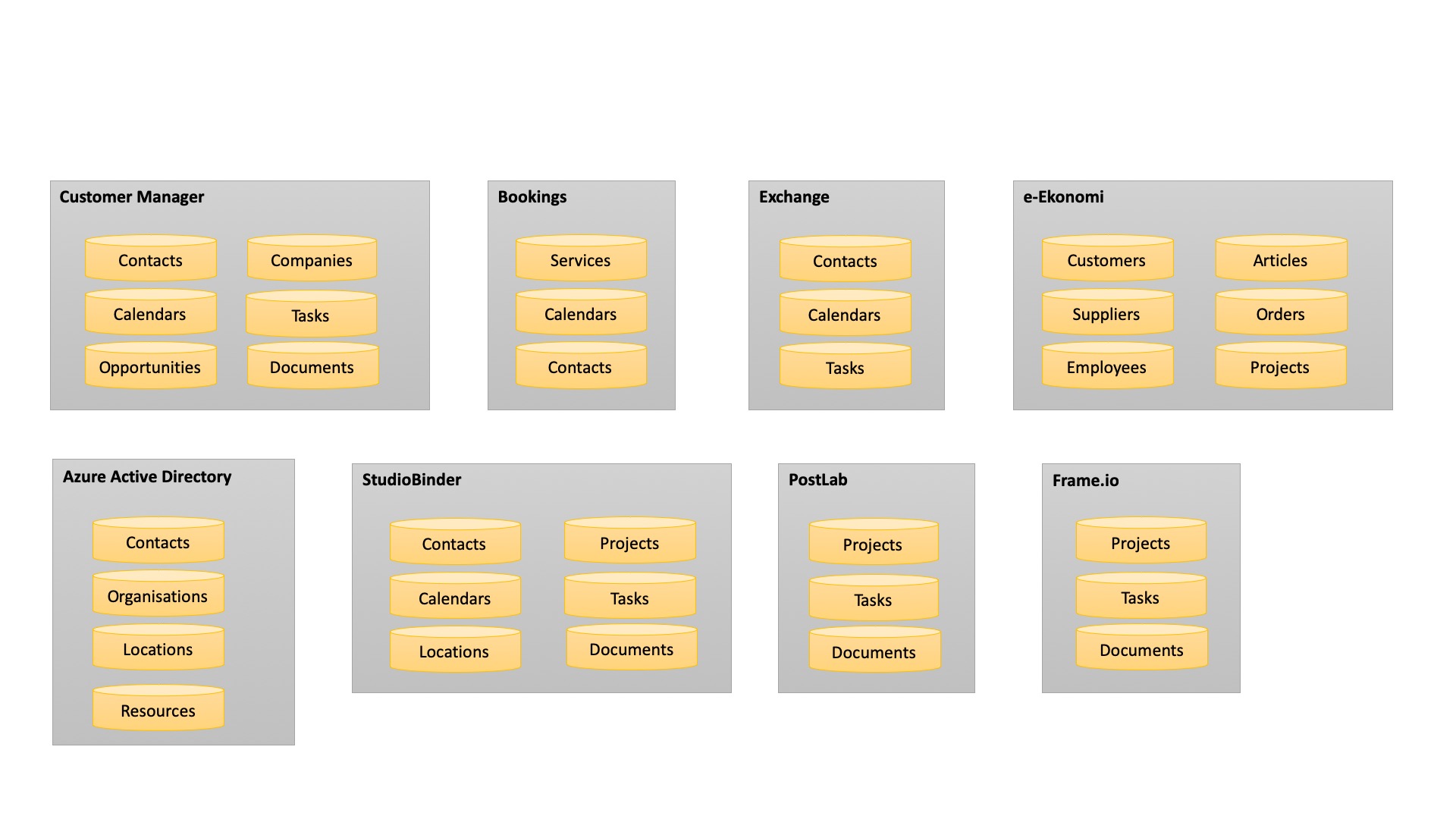Masterdata for film production
With a number of different systems to support your business, you need to find out where both your master data and transactional data are located and how to integrate between the systems.
An application landscape can partly show how it looks, but in order to develop the integrations, you need to know the business processes, main workflows, business rules, information model, data volumes and constraints.
Our Visma and Microsoft applications are cloud based and have public API’s for integration, including push notifications from Visma if it’s data is modified. But albeit StudioBinder is run in the cloud, it doesn’t yet have public API’s for integrations.
The information model used to manage individuals in film production differs between applications, which makes integration more complex.
The most simple is where you have users of the applications, where you pay a license fee, in order to have full functionality.
Individuals doing work in the production are either an employee or a contractor. A contractor, who is working for a supplier, could be talent, cast or extra. Employees often have project based contracts for their roles in the production, either as crew, talent or extras.
However, Visma only support one contact person for a supplier and one contact person per customer at a time.
You have one or more roles in a single production, and the roles could differ between productions. You have to keep track of the roles when invoicing, as the price and terms & conditions differs. I.e. a role is a service in an invoice .
The positive side is that Visma time reporting, for employees, supports an individual to add different number of hours per day in different roles per project. But it doesn’t manage contractors as standard.
Looking at the sales process things are pretty straight forward.
You get a request for a production, one or more individual resources and/or equipment rental, normally from an individual at a company, as we mostly do business to business work.
If it’s a production, and the requests qualifies, we create a project number in Visma. Otherwise, we create a project number before sending the order confirmation in the same system.
The challenge in the sales process is the integrations for customers, contacts, individuals with roles in the production and orders between Microsoft Customer Manager, Microsoft Bookings and Visma modules. It can be done, but its it worth the cost?
So in the end, we have to decide which system is the master for each type of data, and take into account referential integrity between different information objects and life-cycle management of them.
